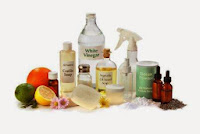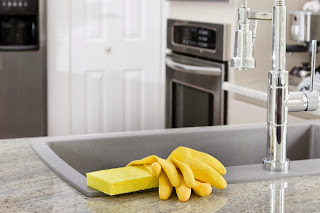How Organic Cleaners Can Prevent Serious Health Problems
By Clifford WoodsThe function of all green cleaning products is to reduce the effect of chemical-based cleaners on people and the environment. Making use of all-natural eco-friendly cleaning agents helps to keep dangerous chemical substances out of the air we take in and out of our waterways, where it could cause environmental harm for many years to come.
Health Advantages of Organic Cleaning Products
People in the U.S. spend a great deal of their time indoors. However, the indoor quality of air is rated as worse that the air quality outside. The United States Environmental Protection Agency ranks indoor air quality as among the top five health hazards to people in America, stating that indoor air is three to five times as dangerous as outside air.
It's determined that bad air quality in workplace buildings along with other work areas costs companies twenty billion in workers' settlement claims annually. Cleaning solutions are a key factor attributed to the cause bad quality of air within our homes and offices. One out of three cleaning product consists of substances proven to result in human un-wellness or ecological troubles.
Research carried out by the Janitorial Products Pollution Prevention Project observed that the typical janitor uses forty-eight pounds of dangerous chemical substances each year. Numerous industrial items consist of excessive amounts of what is know as volatile organic compounds (VOCs), which can often result in severe headaches, problems with breathing and other symptoms.
A few cleaning solutions consist of cancerous carcinogens as well as other chemical substances which have been associated with reproductive system damage, birth abnormalities, kidney damage, and psychological complications.
The damaging health effects from chemical-based cleaners are especially recognizable in janitors, who use cleaning solutions on a daily basis at work. Janitors have a tendency to develop work-related asthma two times more than other occupations.
Studies conducted by Washington State revealed that six percent of janitors endure work-related incidents as a result of contact with chemical cleaning agents every single year. Nevertheless, they are not the only people in contact with harmful indoor air.
The Environmental Protection Agency has determined that up to thirty percent of workers in office environments experience ailments from harmful air at their workplace. Changing to organic cleaning products can significantly minimize health issues and associated expenses.
Environmental Benefits of Organic Cleaners
Chemical substances also impact the environment in a negative way. By doing something as basic as washing a kitchen sink or bathtub with a bit of Ajax, you are sending chemical substances into the sewer system which will eventually find its way into our waterways.
Chemicals accumulate and strengthen as time passes. Chemical compounds frequently present in cleaning agents, like the highly toxic nonylphenol ethoxylate (NPE), break down gradually and actually become more and more poisonous as they decay. Some other substances don't degrade in any way and can damage creatures in our streams and rivers for many years into the future.
Cleaning solutions loaded with dangerous chemicals and odors that are water-based pose serious risks in environments with volatile organic compounds (VOCs). These types of released chemical fumes from particular solids or fluids present short-term and long-term harmful health problems.
The levels of many VOCs are occasionally as much as ten times greater inside your home than outside. These amounts of VOCs are hazardous for individuals who stay in a building for long periods of time as well as for people who use such solutions made up of VOCs; like a janitorial team.
All of the dangers and problems caused by chemical-based cleaning products are easily avoidable by changing from harsh chemical cleaners to organic cleaners with beneficial microorganisms that sterilize and eliminate germs without doing harm to people or the environment.
* * *
Clifford Woods is the CEO of Effective Environmental Services and Organic Environmental Technology.
We brew Beneficial Microorganisms and offer Natural Organic Solutions
.jpg)


















